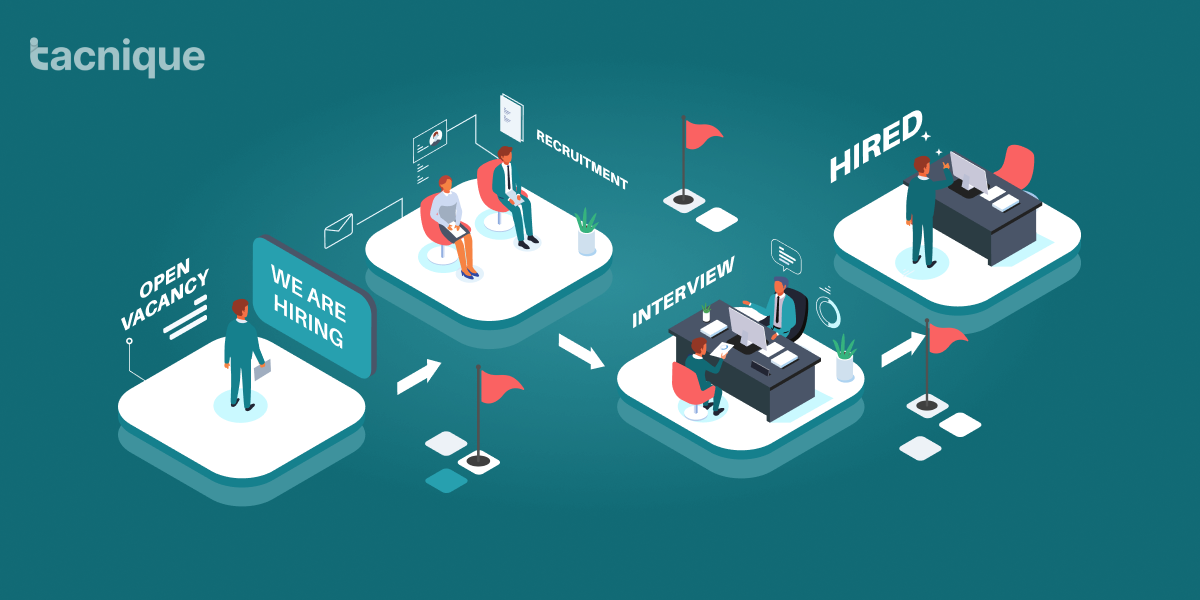
Resume To Offer: Red Flags To Look In Each Stage Of Tech Hiring
Looking to hire top tech talent? As a company, finding the right candidates for your tech team is crucial for success.
But navigating the tech interview process can be daunting, especially when you're unfamiliar with the various stages and what to look for in each one.
In this blog post, we'll provide a guide to help you understand the tech interview process and what to look for in each stage. From evaluating technical skills to assessing communication and collaboration abilities, we'll provide insights and tips to identify the right candidates for your team..
Whether you're an HR professional, a manager, or a business owner, this guide is for you. So read on for a comprehensive and personal approach to the tech interview process.
Here are the stages:
1. Phone Screening
This is usually the first step in the interview process, where the interviewer will briefly assess your technical skills and experience, as well as your company culture and fit for the role.
a. Lack of preparation: If the candidate seems unprepared for the call, doesn't have a clear understanding of the role or the company, or is unable to articulate their experience and skills clearly, it could be a red flag.
b. Negative attitude to the previous employer: If the candidate speaks negatively about their previous employer or colleagues, it may be an indication of a negative attitude that could impact team dynamics.
c. Poor communication: If the candidate has trouble communicating their thoughts clearly or struggles to answer basic technical questions, it could be an indication of poor communication skills.
2. Technical Interview:
This is typically a face-to-face interview where you will be asked to solve technical problems or whiteboard coding challenges. This stage is designed to evaluate your ability to think through technical problems and communicate your thought process clearly.
Red Flags
b. Lack of attention to detail: For example, if they miss a semicolon, forget to close a bracket, or fail to catch a syntax error, it could indicate that they may struggle with debugging or writing clean, efficient code. Developers must possess a keen eye for detail, as even minor oversights can result in substantial issues or glitches within the code.
c. Difficulty in whiteboard coding: If the candidate struggles with whiteboard coding challenges or is unable to translate their coding skills to a whiteboard setting, this could potentially suggest their ability to excel in a real-world coding environment.
d. Lack of interest: During a technical interview, it's important to gauge a candidate's level of interest and enthusiasm for solving technical problems and participating in the interview process. If the candidate seems disinterested or unengaged, it may indicate a lack of commitment to the role or the company.
Now might be a good time to introduce ourselves - Tacnique is an interview-as-a-service platform that outsources your tech interview. With our evaluations, you can take a hiring call really fast - 80% faster in fact!

3. Behavioral Interview:
This face-to-face interview (or Video Conferencing) focuses on evaluating your personality, work style, and communication skills. The interviewer may ask questions about how you have handled certain situations in the past or how you approach collaboration and team communication.
a. Inconsistencies in background checks: If there are discrepancies or inconsistencies in the candidate's background checks, it could be a sign of dishonesty or a lack of integrity. Be sure to go through these checks.
b. Conflicts with company values: If a candidate demonstrates insensitivity or makes derogatory comments towards a particular group of people during the behavioral interview process, it could indicate a misalignment with the company's core values. Recognizing these indicators can help avoid potentially difficult situations in the future.
c. Inflexibility: If the candidate seems unwilling to learn new things or adapt to different situations, this might raise concerns about their suitability for a dynamic and fast-paced technology-driven work environment.
d. Poor references: If the candidate's references provide negative feedback or express concerns about the candidate's ability to work effectively in a team environment, it could be a sign of potential issues with cultural fit.
4. Offer Negotiation:
In the event that the company moves forward with an offer, they will provide you with a compensation package, and there may be a possibility for negotiation regarding its terms. It's important to consider the entire package, including salary, benefits, equity, and other perks, when evaluating the offer.
Red Flags
a. Unrealistic or overly aggressive salary expectations: This could be a sign of potential issues with collaboration, teamwork, or understanding of the market and industry.
b. Focus solely on compensation without interest in other benefits and perks: This could be a sign of a lack of interest or commitment to the company's culture and mission.
c. Inflexible negotiation without a willingness to consider other factors such as benefits or equity: This could be a sign of potential issues with teamwork or collaboration in the future.
In summary, navigating the tech hiring process can be a daunting task, and it's crucial to be mindful of warning signs throughout the various stages. Indications such as inadequate preparation, poor communication skills, a negative attitude towards previous employers, inability to solve technical problems, lack of attention to detail, and inconsistencies in background checks must all be noted as potential red flags.
As the candidate advances through the process, it's essential to observe their ability to adapt and collaborate effectively with others. By acknowledging these indicators, both the employer and the candidate can make informed decisions and establish a thriving and productive work environment.
Good luck, and let's meet again soon.



.png?width=352&name=Blog%20-7-%20The%20Power%20of%20Collaboration_%20How%20AI%20and%20Recruiters%20Can%20Work%20Together%20(1).png)